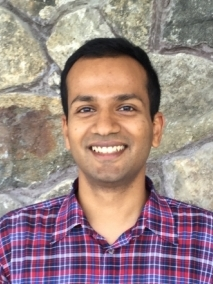
Abstract
A wide variety of electronic and optoelectronic devices such as transistors, LEDs, lasers, and solar cells use epitaxially grown thin films of semiconductor alloys. This imposes a constraint of lattice-constant matching between substrate and film, if crystal defects such as dislocations are to be avoided. This has traditionally limited the use to only a handful of alloys in composition space. In this talk, I will discuss how one can access new alloy compositions for a range of optoelectronic applications while keeping dislocation densities low. I will present cases of semiconductor alloy thin films exhibiting different and unusual mixing behavior from that in the bulk. Finally, I will show how an emerging electron microscopy technique that uses channeling contrast is providing new structural and chemical insight on what makes dislocations harmful for devices. These examples point the way to bringing new material systems with unique properties into the mainstream.
Biography
Kunal Mukherjee received his B.Eng. in Electrical Engineering from Nanyang Technological University in Singapore (2007) and his Ph.D. in Materials science from MIT (2014). He has worked in 100G optoelectronics at Finisar Corporation (2008-09) and held postdoctoral appointments at MIT (2015) and IBM (2016), working on problems in compound semiconductor epitaxy, deeply-scaled CMOS devices, and fuel cell materials. He is currently an assistant professor in the Materials department at UC Santa Barbara (2017-present). His research interests lie at the intersection of growth physics of narrow gap semiconductors, crystal defects, electron microscopy, and device physics.